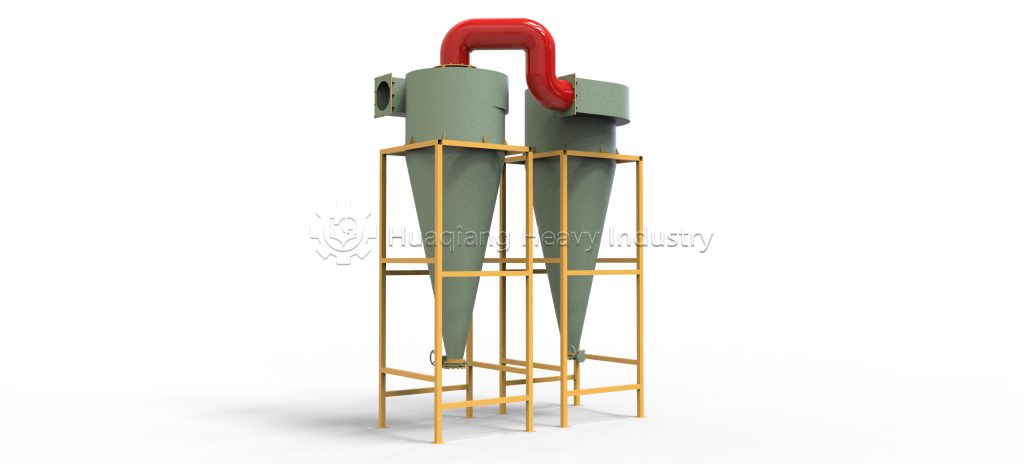In today’s industrial production, there’s a device that silently protects our working environment: the cyclone dust collector. What role does this seemingly simple yet extremely effective device play in fertilizer production lines, and how does it play such an indispensable role across so many industries?

The Physics of Efficient Separation
Utilizing ingenious centrifugal force principles, cyclone dust collectors creatively solve the challenge of high-concentration dust pretreatment. When dust-laden airflow enters tangentially at 15-20 m/s, it forms intense rotational vortices. Heavier particles (above 5-10μm) are flung against the walls by centrifugal force, eventually falling into the dust hopper, achieving 80-90% purification efficiency.
This purely physical separation requires no filter media, making it ideal for special dust conditions—high temperature (up to 400°C), high humidity, or corrosive characteristics—creating perfect conditions for subsequent fine filtration.
Practical Design Built to Last
The charm of cyclone collectors lies in their “less is more” philosophy:
- Simplified Structure: Only comprising inlet pipe, cyclone tube, exhaust pipe, and dust hopper
- Easy Maintenance: No moving parts, extremely low failure rate
- Cost-Effective: 1/5 the cost of bag filters, 40% less energy consumption
- Space-Saving: Compact footprint for easy system integration
These features make them reliable choices for continuous production environments, especially for small-to-medium enterprises needing stable dust control with limited budgets.
Cross-Industry Dust Management Expert
From raw material dust in fertilizer production to metal particles in metallurgy, cyclone collectors demonstrate remarkable adaptability:
In mining crushing processes, they effectively capture hard particles like quartz; in building materials, easily handle high-concentration cement raw meal dust; in chemical production, serve as crucial equipment for acid-alkali exhaust pretreatment. This wide applicability makes them the “first line of defense” in industrial dust control.
With increasingly stringent environmental regulations, cyclone dust collectors are embracing new opportunities. Modern improved versions, through optimized structural parameters (like volute inlets and guide vanes), now achieve over 70% capture efficiency for 3-5μm particles. This century-proven classic equipment continues to rejuvenate itself.





